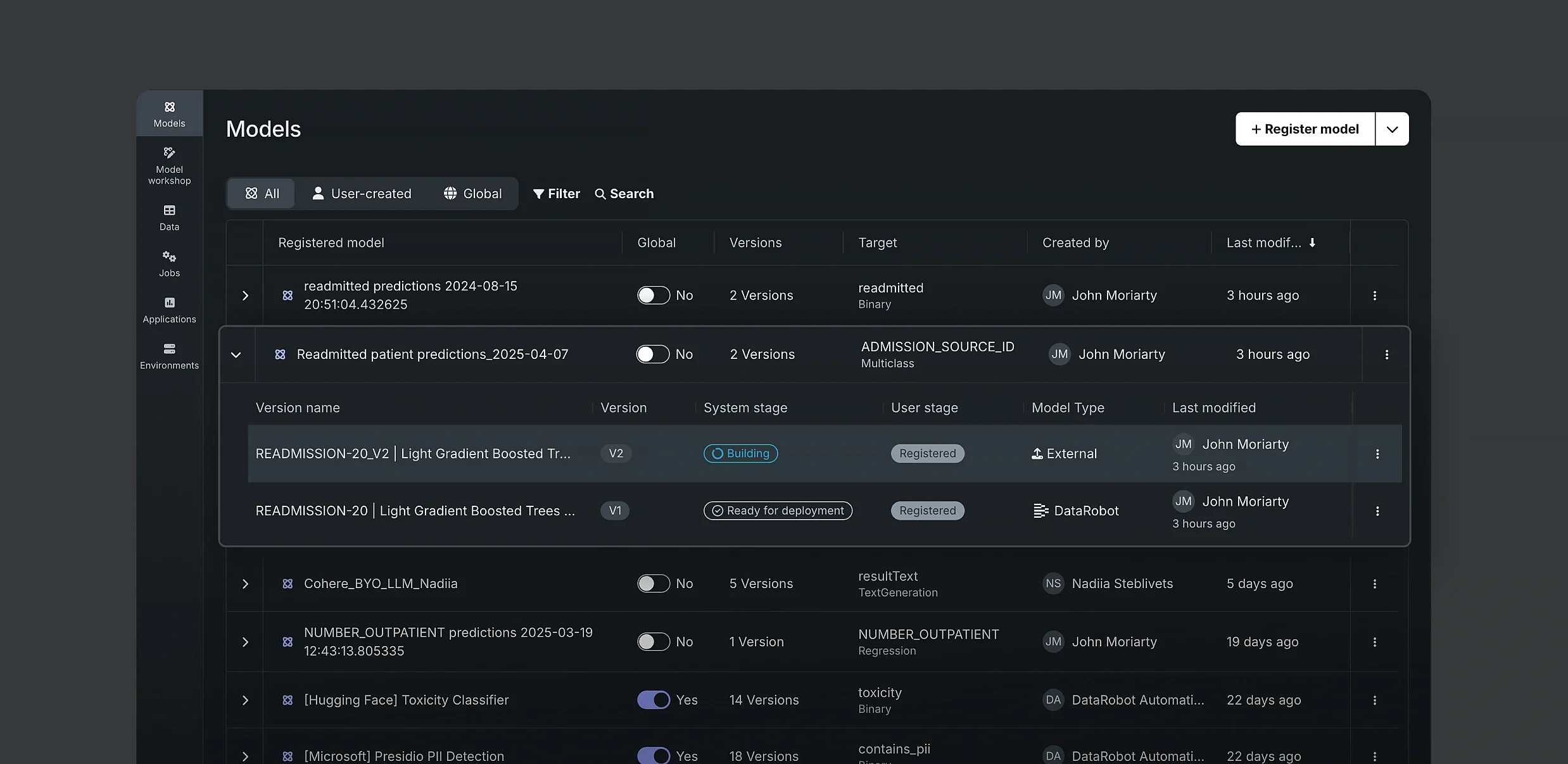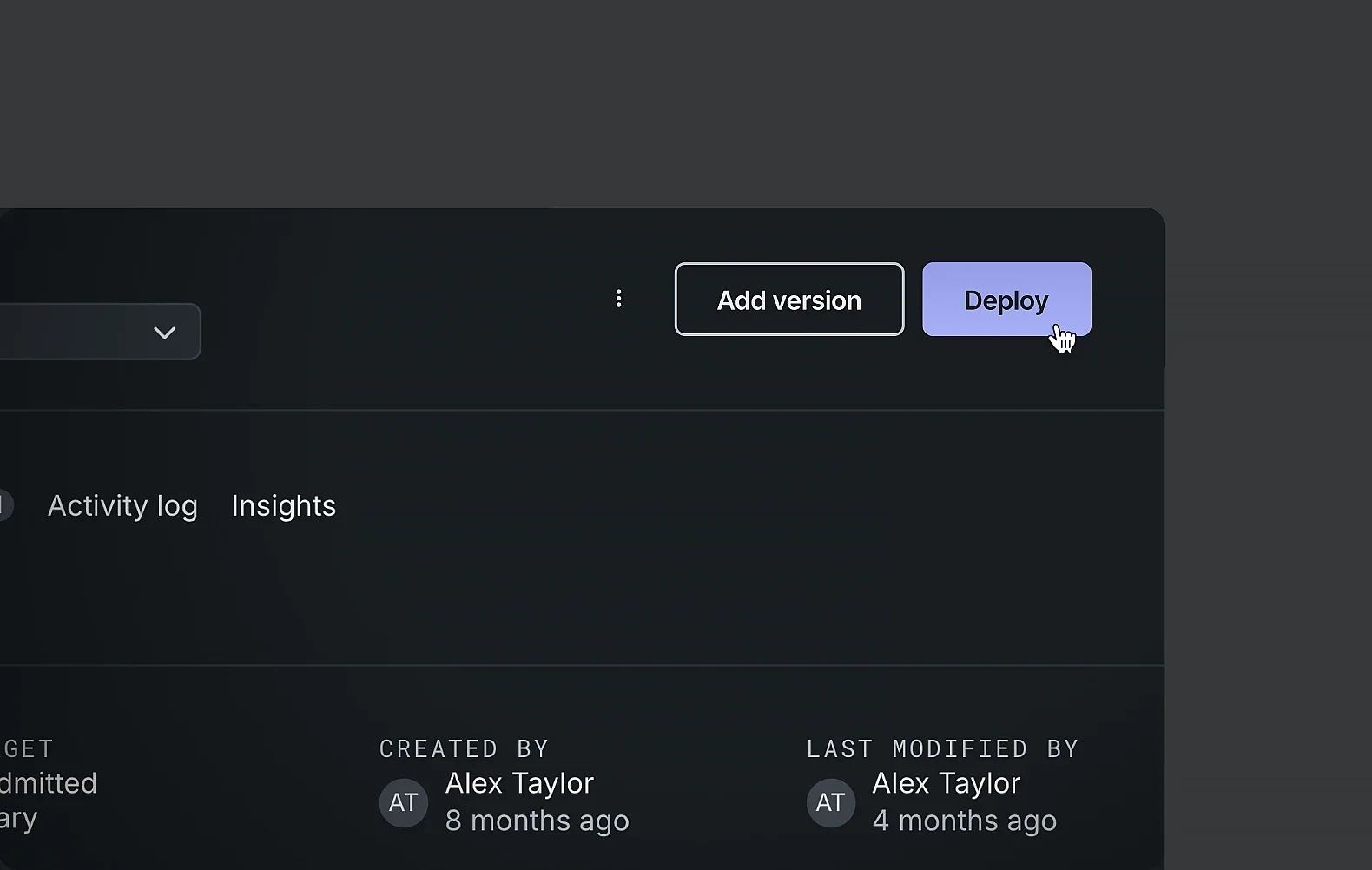Predictive AI


Start modeling in minutes, not hours. Skip manual data prep. Clean, balance, and ensure your data is compliant and ready for feature engineering and modeling.
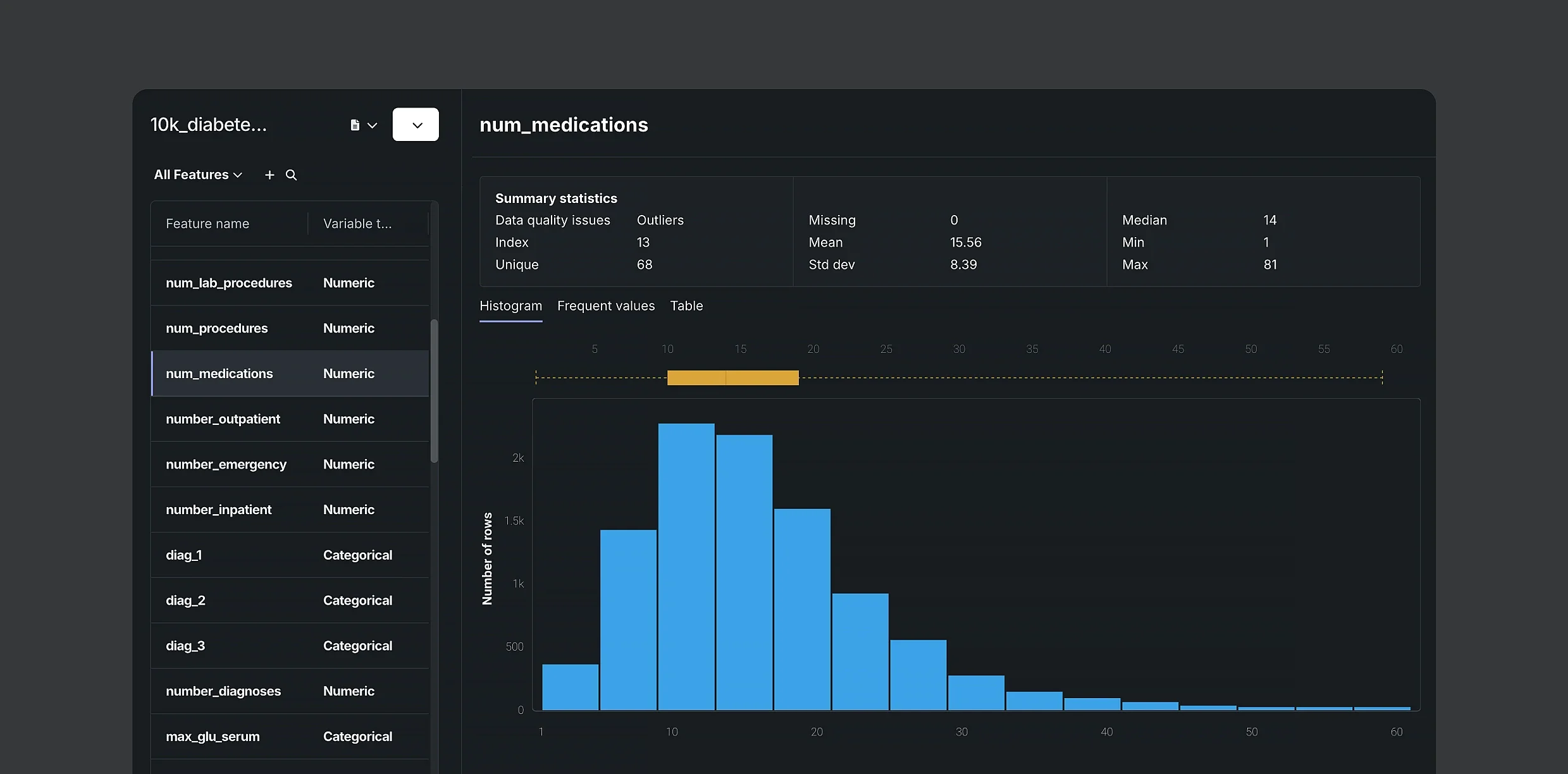
Start analysis and modeling without removing missing values.
Skip repetitive coding with repeatable recipes for duplicate removal.
Detect and correct dataset oversampling and undersampling with synthetic data generation.
Connect to all of your data. Start working with your data without slowdowns due to connections and authentications. Use connectors with best-of-breed data warehouses to integrate all your data seamlessly into one workspace.

Define features without repetitive coding. Streamline feature discovery by defining every feature of your dataset automatically. Customize and run feature detection and reduction algorithms to define and rank features by importance, and remove anything irrelevant. Rapidly experiment with different lags structures, data aggregations, and differencing strategies for time series projects.
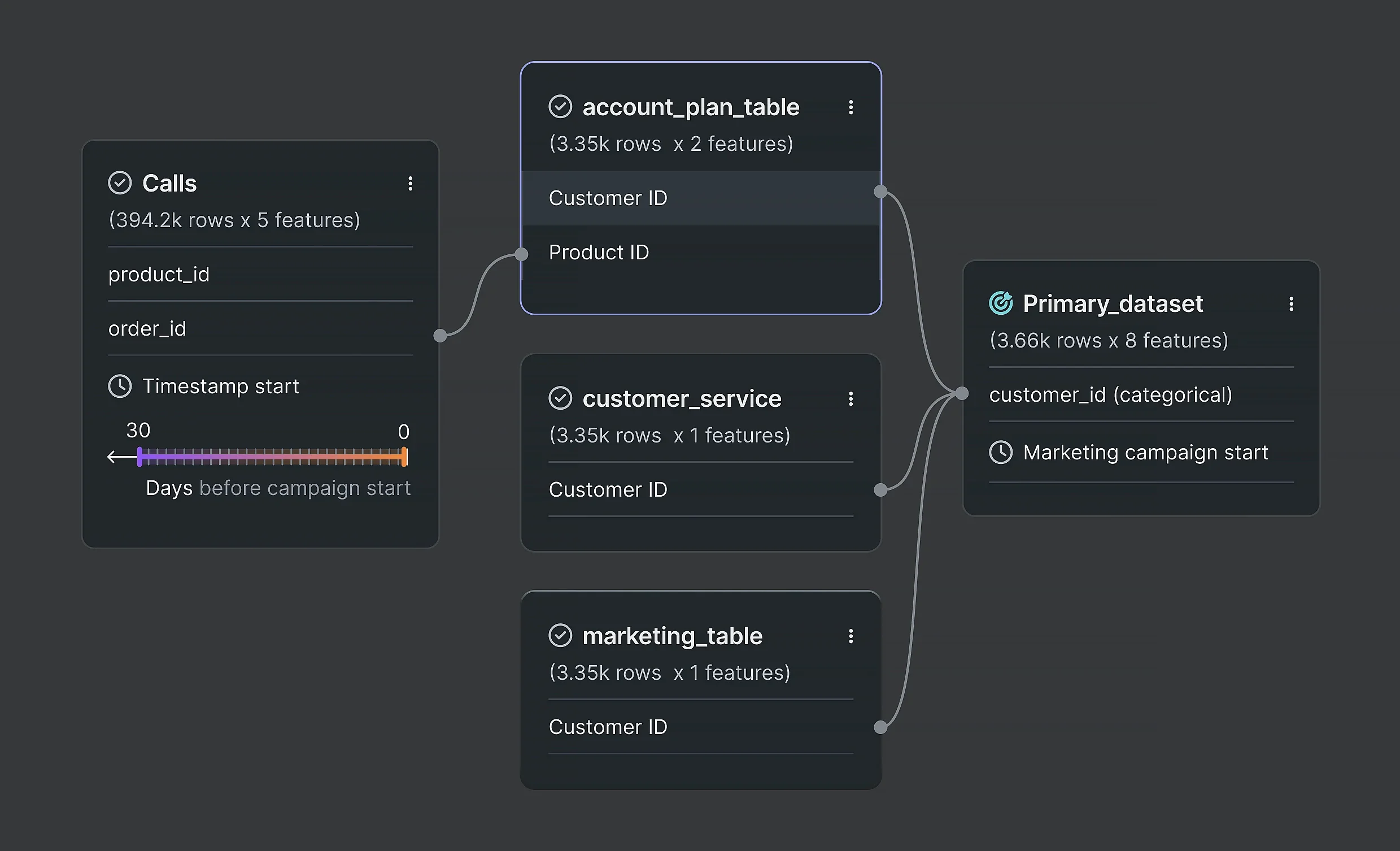
Remove complexity from multimodal data prep. Effortlessly augment diverse data formats with customizable feature engineering pipelines. Transform features and rapidly experiment with dozens of suggested preprocessing and feature engineering approaches.
Partition datasets by time, sync time zones and timestamps, or apply log transformations to make datasets stationary.
Turn coordinates and satellite images into actionable features like categorical data or vectors.
Process images into categorical data or vectors with different types of neural networks.
Use encoding techniques to label and categorize your raw data.
Simplified multimodal data preprocessing. Take the complexity out of processing different types of data for intricate ML use-cases. Select and execute the best data preprocessing approaches, and customize modeling pipelines and recipes.
Efficiently explore hundreds of lags, differencing options, and dataset augmentations to find approaches that will best improve model accuracy.
Enhance limited GIS data with synthetic data generation. Explore optimal preprocessing methods to define features and transform data types.
Optimize image data processing with vectorization and editable feature engineering blueprints. Expand limited datasets using image transformation pipelines.
Optimally transform data into useful categories by unbiasing over- and under-sampled data with synthetic data generation. Select encoding approaches and the most relevant features.
Automate feature engineering pipelines. Experiment more efficiently with automated feature detection and reduction methods. Customize for your use case, then rank every feature while decluttering low-impact options.
Start feature engineering faster by having DataRobot define existing features in a raw dataset.
Save time with tailored feature suggestions based on your project needs. Customize your requirements to filter irrelevant features and noise.
Quickly pinpoint relevant features with automated feature engineering.
Flexible model tuning at scale. Explore and test hundreds of models and variations to find the most accurate for your use case. Fine-tune and train models with one-to-one experiment comparisons.
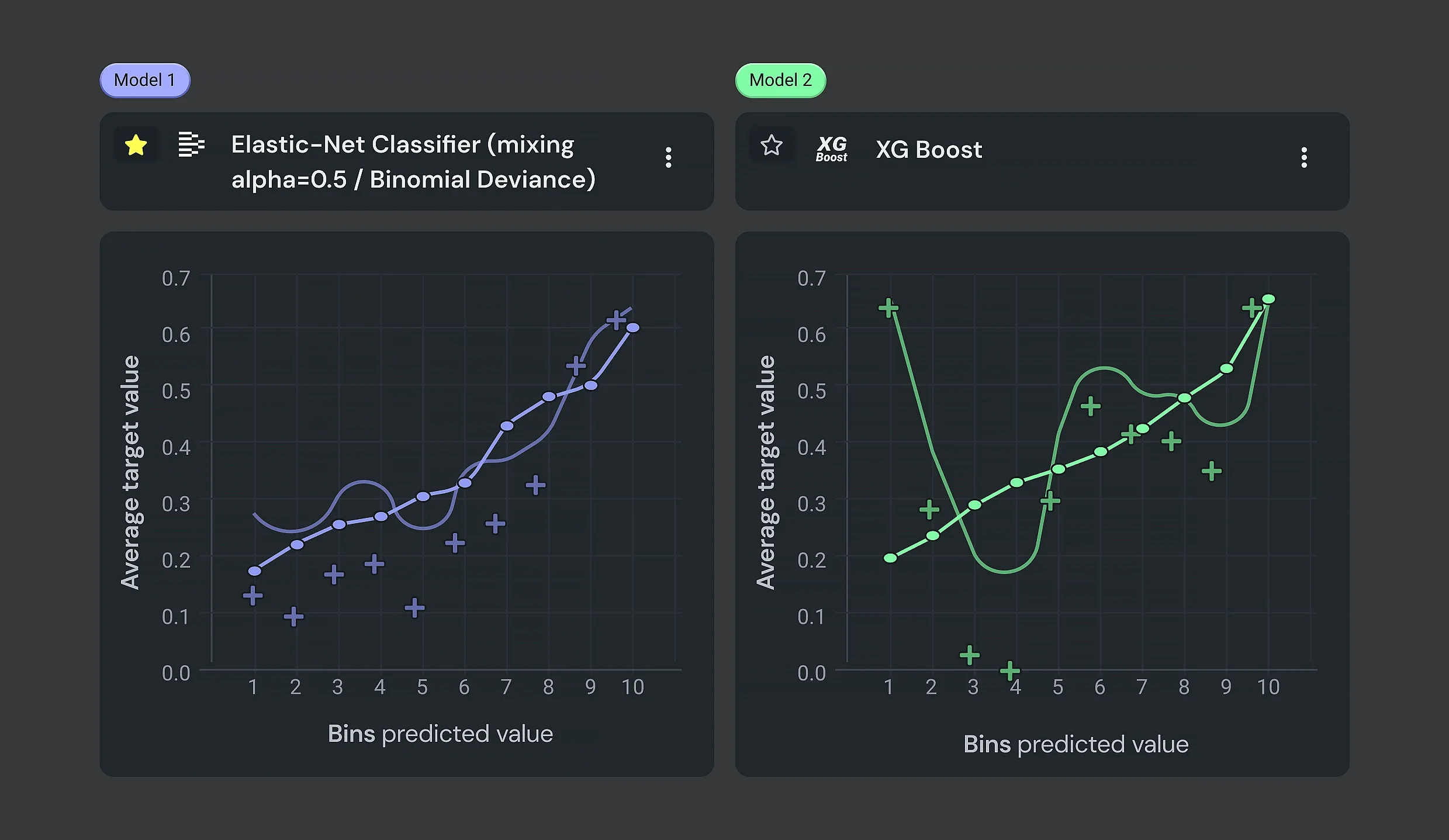
Centralized experiments, notebooks, and data. Effortlessly manage and track multiple experiments with automatic version control. Collaborate seamlessly in a unified workspace with role-based access to project data, feature engineering blueprints, experiments, and notebooks.
Time series modeling. Customize out-of-the-box time series technique suggestions and generate high-quality, hyper-granular forecasts without the complexity of mastering time series modeling approaches.
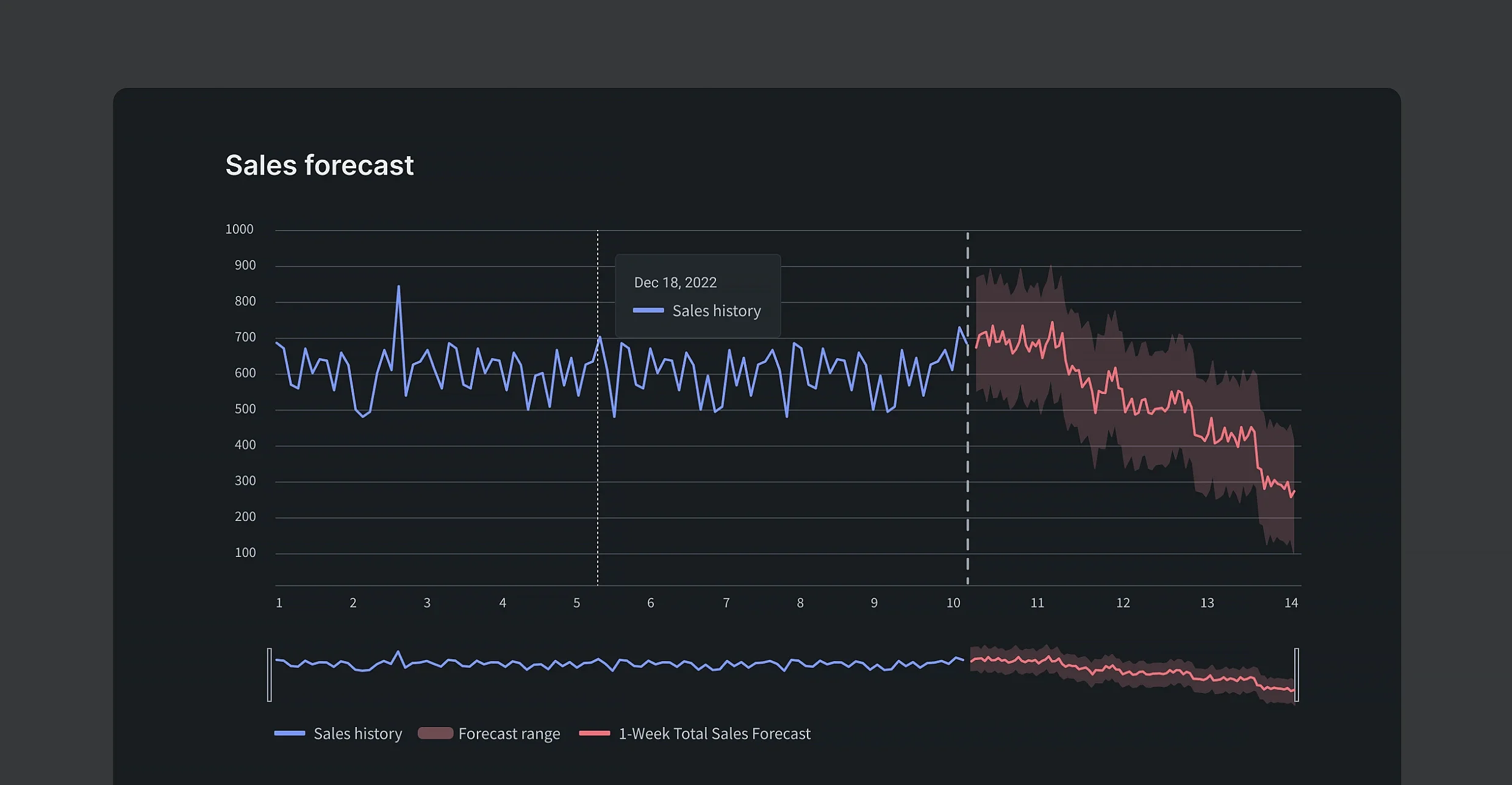
Use a variety of approaches, such as Dynamic Time Warping (DTW), to find time-based patterns in similar series rather than business logic alone.
Use various techniques that allow you to learn from similar series to forecast with limited data. Handle irregular data by automatically aggregating data or using row-based time series.
Easily customize prediction windows to forecast current, potentially unknown values, properly treating current and historical values with our suite of time series models and techniques.
Detect unusual data patterns and understand the features driving them on an individual and holistic basis. Use Synthetic AUC to gauge the accuracy of various unsupervised approaches.
Multimodal models. Improve accuracy by building supervised and unsupervised models with a mix of data types including: time aware data, images, geospatial coordinates, natural language, and more.
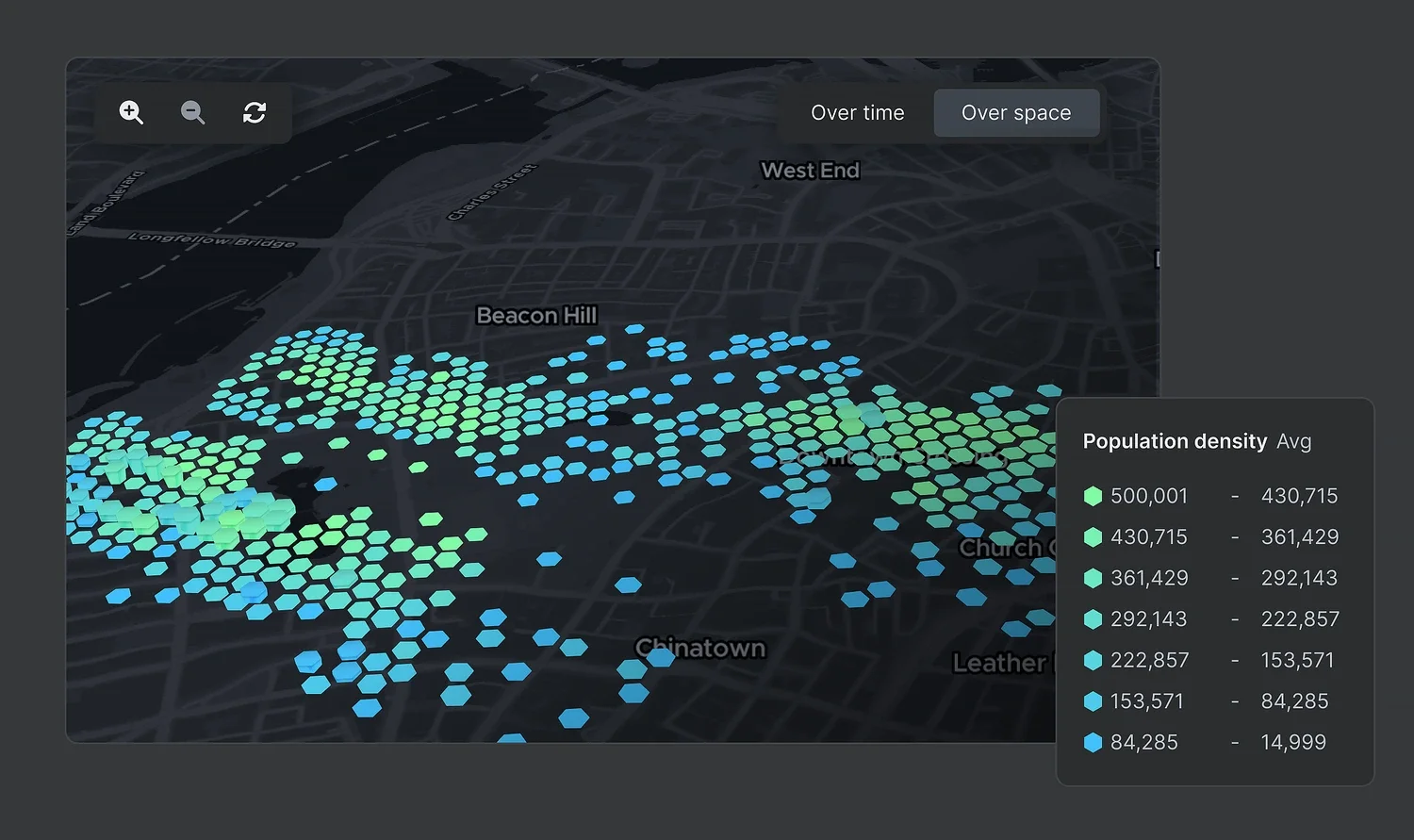
Supervised models. Turn your data into predictive models in a fast and repeatable way.
Tag and categorize your data at scale to gain insight into your inventory, programmatically score leads, detect spam, and more.
Build predictive models and understand relationships between feature points to predict and optimize business operations.
Assign labels to multiple data points to programmatically build use cases like creating an indexable inventory, analyzing customer feedback at scale, or personalizing customer recommendations.
Predict which mutually exclusive category your data belongs to, enabling applications like image recognition, document classification, and more.
Unsupervised models. Uncover latent features and patterns in large amounts of data to deliver specialized use cases.
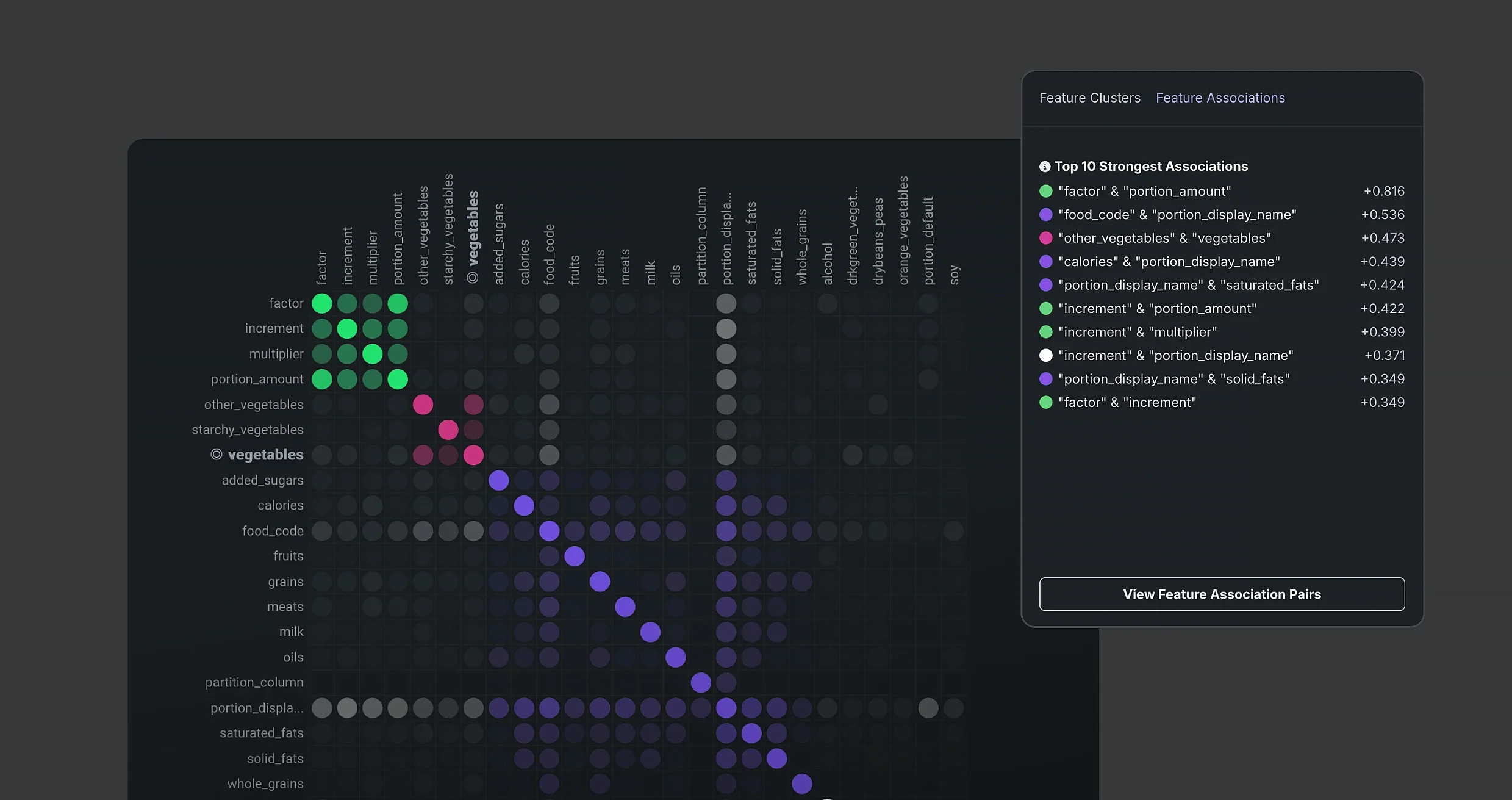
Anomaly detection. Detect outliers in your data to power models that can predict rare events like fraud, manufacturing errors, or security breaches.
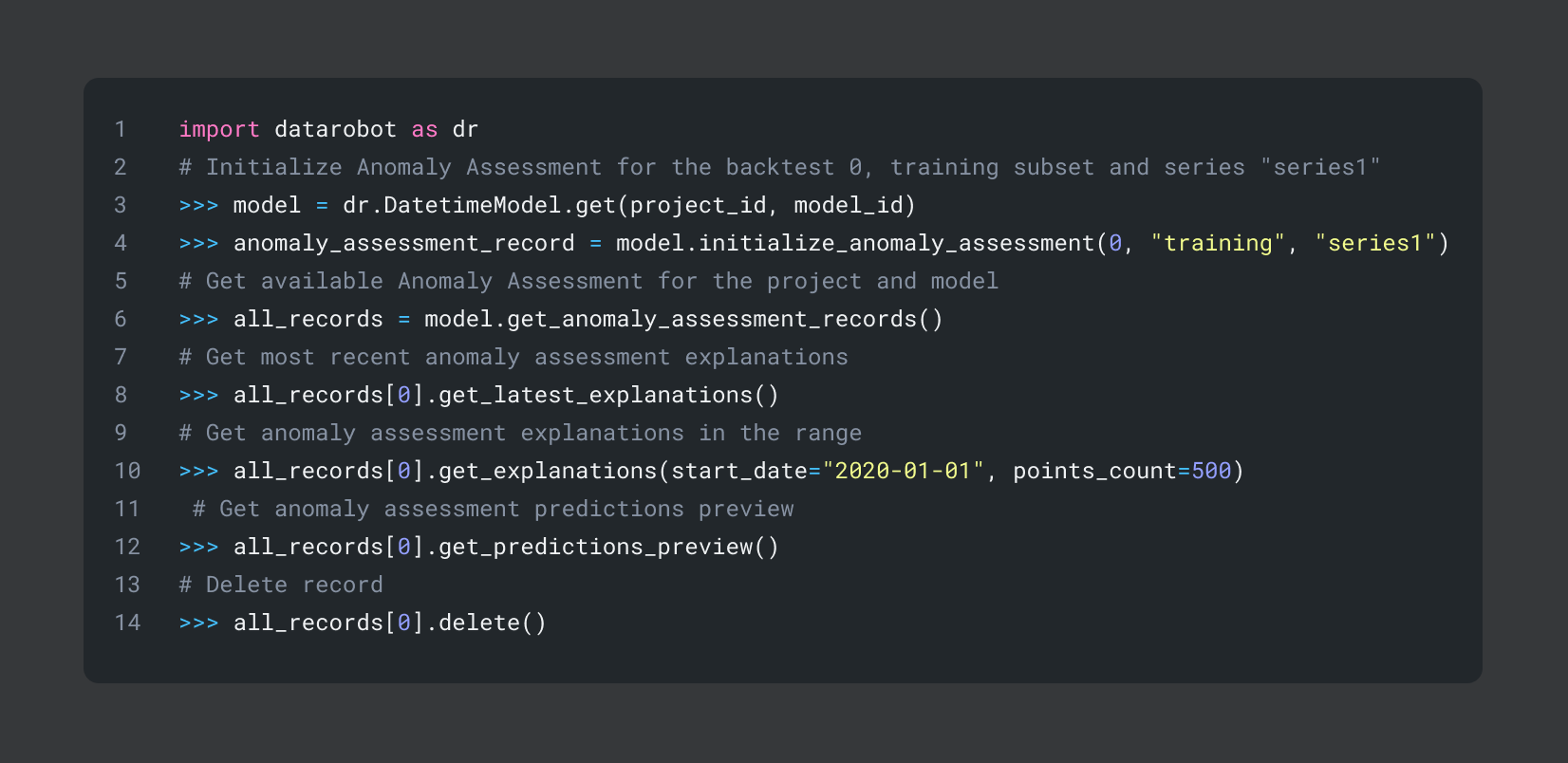
One-click deployment. Instantly generate an AI pipeline to build and deploy registered models into production without compromising integrity.
Embed AI into your business and enable data-driven decision making. Maximize your models’ impact by integrating them into downstream business applications or deploying them in user-friendly applications.
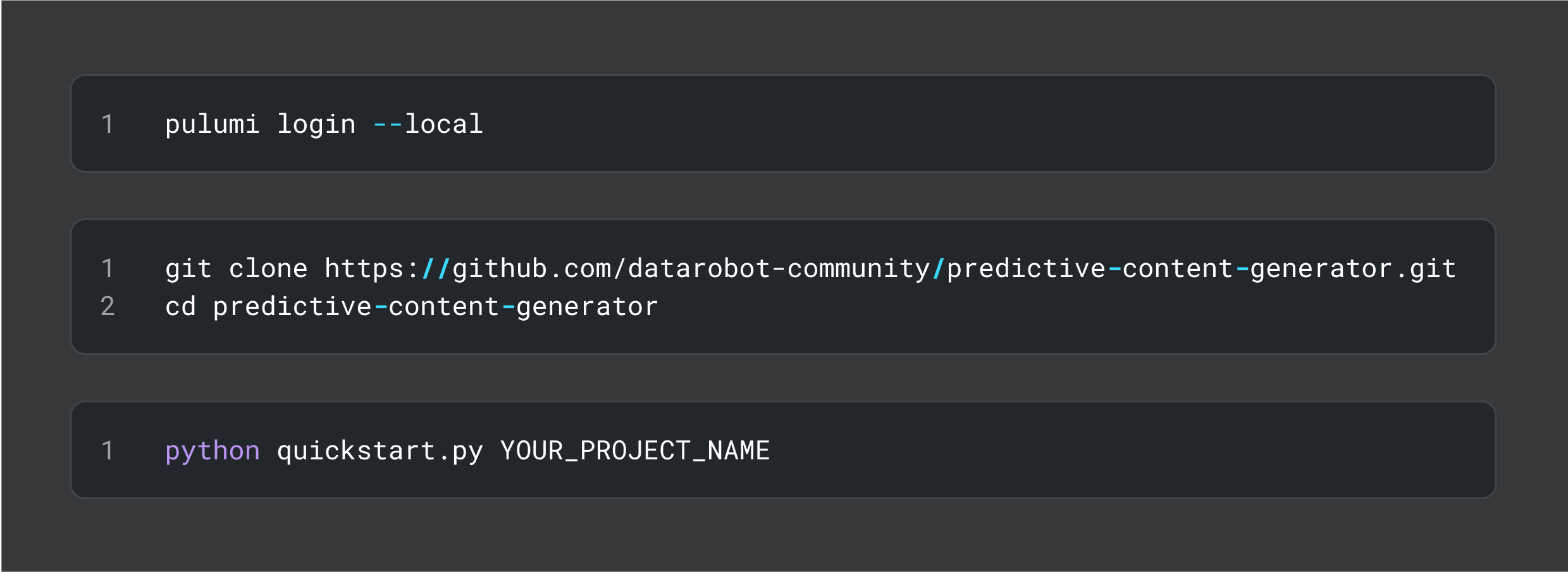

Create shareable, interactive applications that empower business users to make data-driven decisions with just a few lines of code.

Integrate predictions into your internal systems and applications with our open API. Use our monitoring tools to track model health and prediction latencies.

Use our GUI app builder to create and customize predictive apps, or use existing templates for forecasting “what if” analysis, and more
Monitor custom metrics essential to your business. Track the health of each model in production based on your team’s needs. Get automated alerts for data drift, latency, or service degradation.
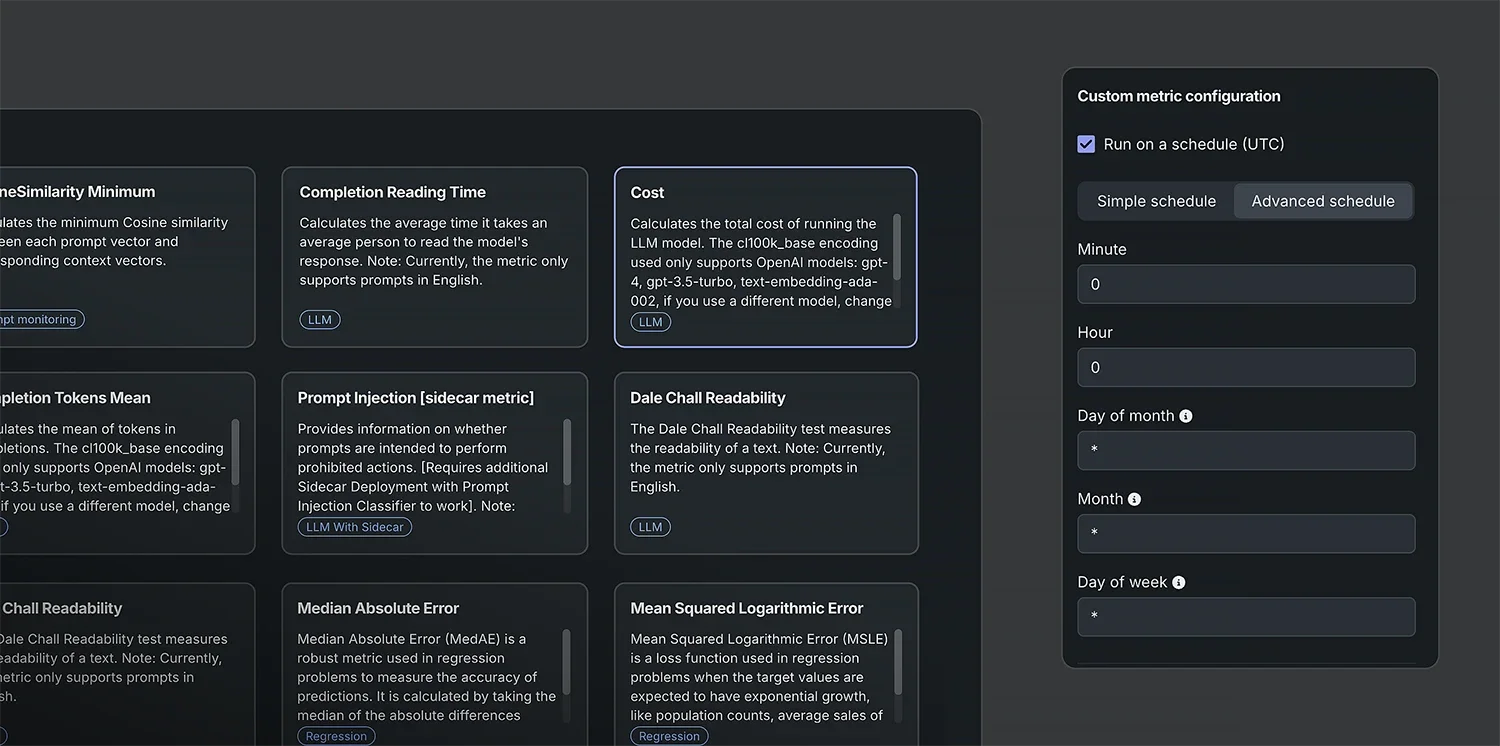
Seamlessly replace legacy models. Focus on implementing the latest models instead of retraining outdated ones. Compare experimental models with deployed ones on production data, and easily hot swap them in to maintain or improve prediction accuracy without downtime.
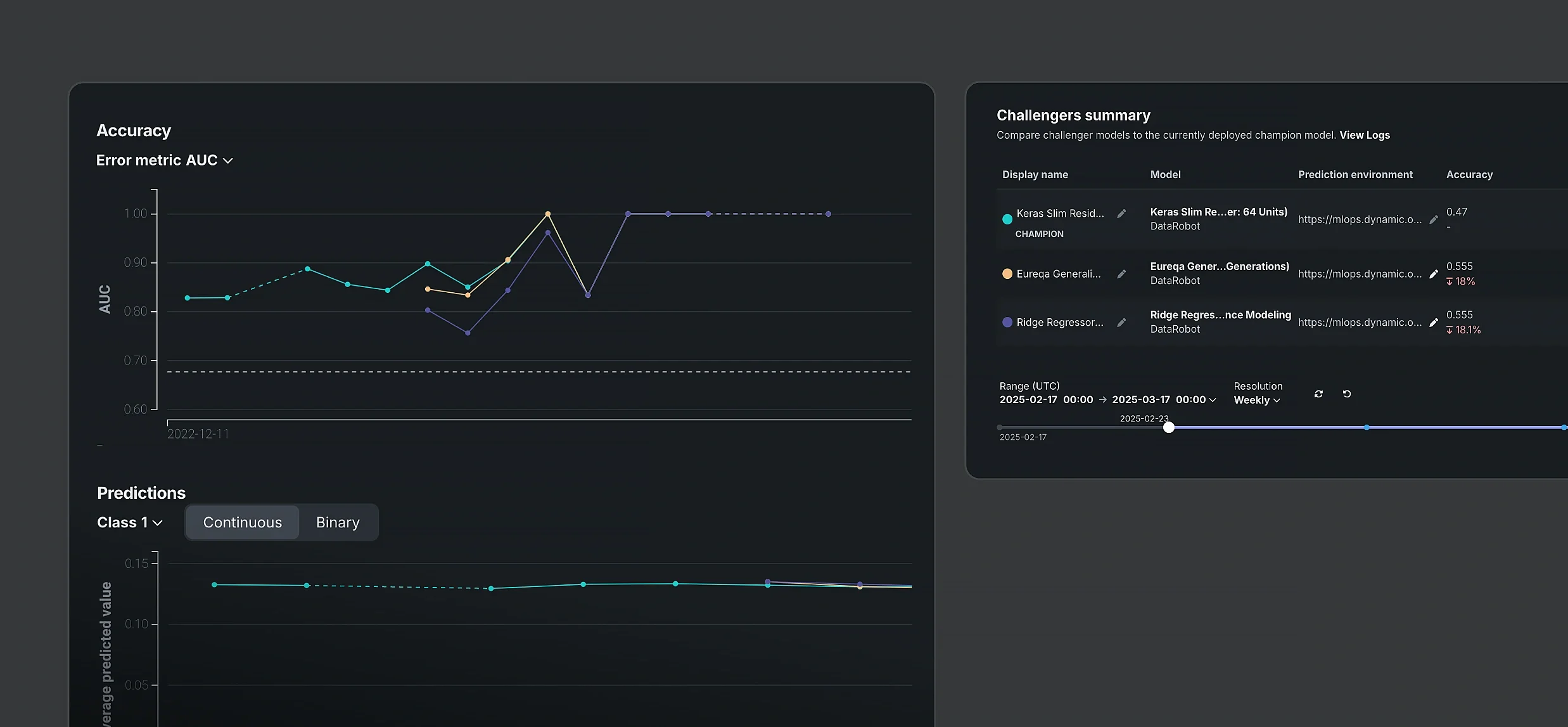
Visualize model explainability and quality. Explore every facet of your model with interactive visualizations of feature impact, effects, coefficients, and more.
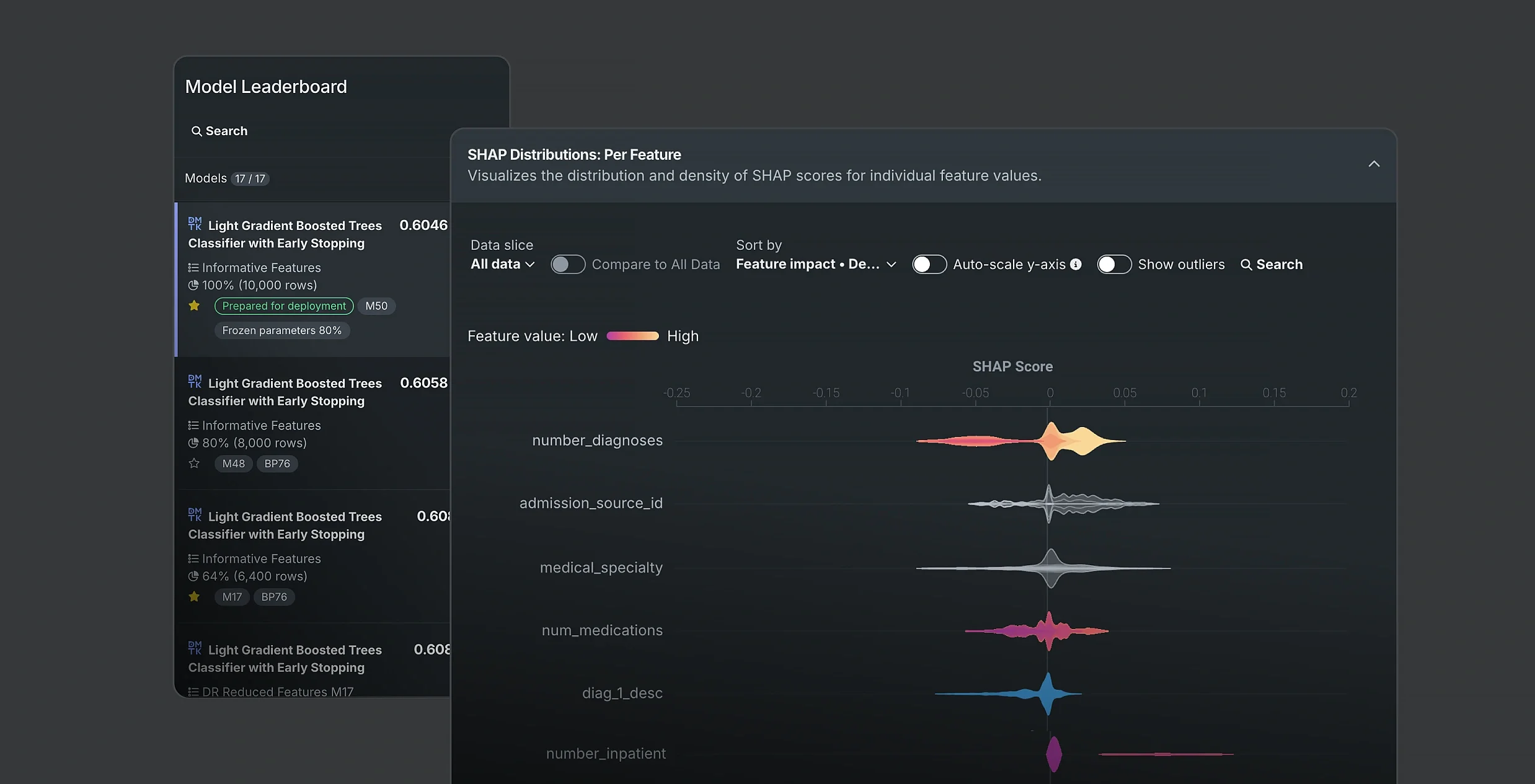
Understand which features are driving model decisions with Shapley values, LIME, Violin plots, and feature impact visualizations.
Detect underlying biases by generating predictions and segmenting results based on variables like age, race, and gender.
Make models fully explainable by visualizing how each component contributes to the final prediction.
Improve your model by uncovering non-linear relationships, spotting impactful but low-relevance features, and identifying potential errors.
Align stakeholders on model methodology. Overcome the challenge of explaining complex mathematical concepts to business and compliance stakeholders by automatically generating clear, plain-language documentation and presentations.
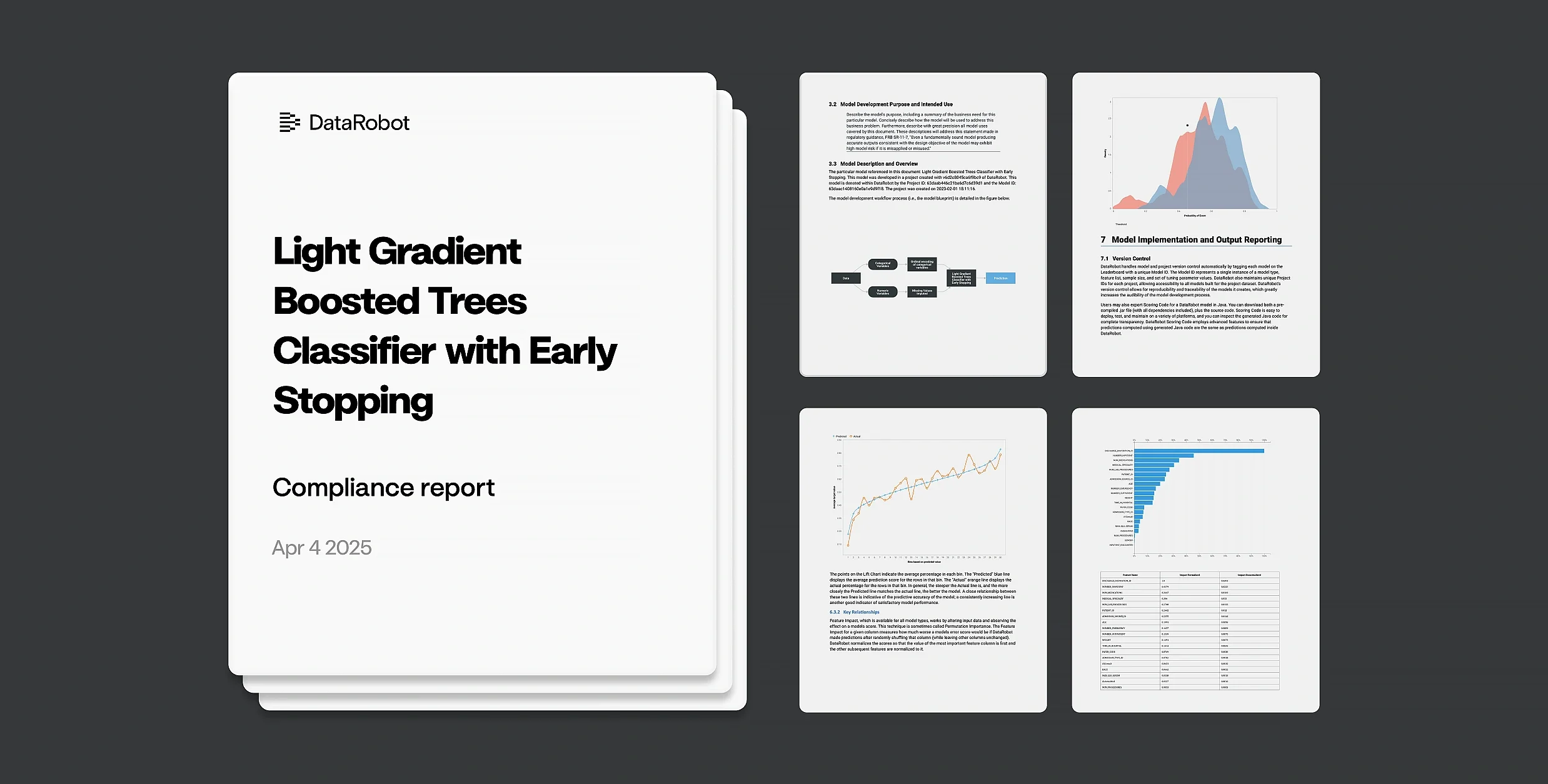
Custom and external model registration. Consolidate your organization’s models, including DataRobot and external ones, into a single repository. Ensure version control and enhance collaboration.
